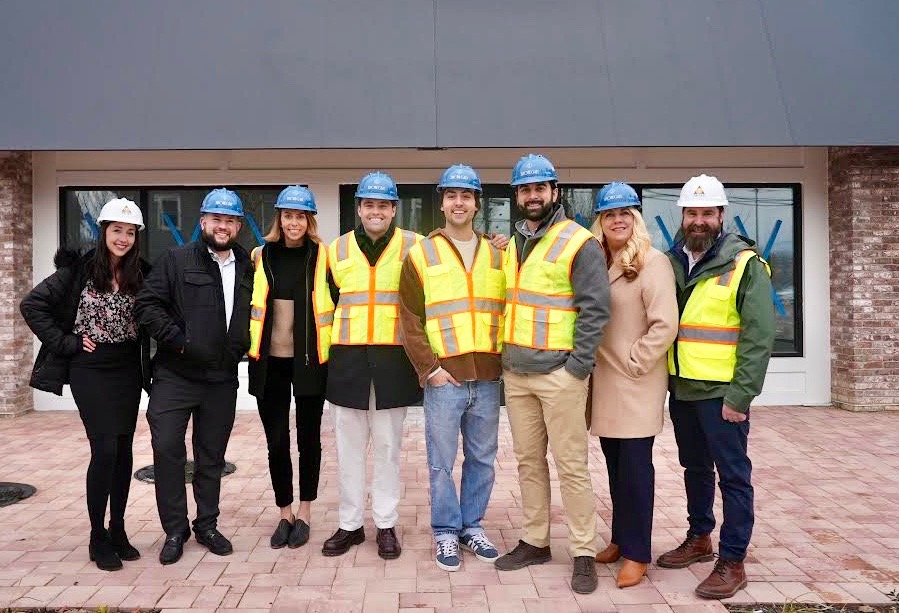
Greater Bay Shore coverage is funded in part by Shoregate, now leasing brand-new premium apartment homes in the heart of Bay Shore. Click here to schedule a tour.
by Karl Grossman |

The Suffolk Legislature has approved what can be a game-changing program for this county, where 70 percent of homes use cesspools.
Cesspools are nothing but holes in the ground in which waste is sent untreated with nitrogen a major component of what leaches out. The nitrogen impacts groundwater and raises havoc in our surface waters causing brown and red tides, and otherwise setting off eutrophication.
Passed unanimously this month was “A Local Law To Establish A Grant Assistance Program For The Installation Of Innovative And Alternative Onsite Wastewater Treatment Systems.”
There are a variety of such hi-tech septic systems that dramatically limit nitrogen discharge. But they are expensive — between $14,500 and $17,500 (twice the cost of purchase and installation of a cesspool). They’ve been approved and are used elsewhere in the U.S.
Much credit for getting Suffolk County to, at long last, embrace these advanced systems goes to Kevin McAllister of the Sag Harbor-based organization Defend H20. He was Peconic Baykeeper for 16 years before becoming founding president of Defend H20 in 2014. In both positions, he vigorously and ceaselessly tried to get Suffolk County government to accept these systems — and what opposition he met!
For example, in 2011, McAllister along with then-county legislator Edward Romaine (now Brookhaven Town supervisor whose district had included Shelter Island) and Islip Town Councilwoman Trish Bergin-Weichbrodt organized a forum on the advanced treatment systems held in the county Legislature’s meeting room in Hauppauge.
But no member of then-county executive Steve Levy’s administration attended. And there was no representation from the county agency with responsibility for waste issues, the Suffolk Department of Health Services.
McAllister says his understanding is “they were ordered not to attend.”
That was then — and what a change now!
“I’m pleasantly surprised because I think there is real progress in accepting these alternative systems and putting them to use in Suffolk County now,” McAllister was saying the other day. “I have been beating the drum for a long time,” said McAllister, who has degrees in natural resources conservation, marine biology and coastal zone management. “I’ve written reports and spoken out. And now the county is embracing this technology, as it should. I’ve been out there continuously talking about this and I feel now, with it having gotten traction, a bit like Johnny Appleseed.”
Other groups have been involved as well, such as The Nature Conservancy, he notes, in “causing a “groundswell of public support” for the advanced systems. Indeed, as Kevin McDonald of The Nature Conservancy of Long Island has said, “reliance” on cesspools is “an outdated practice that allows nitrogen from human waste to flow into our groundwater and surface waters with adverse impacts. Harmful algal blooms, dead fish, loss of shellfish have all been attributed to nitrogen pollution from sewage.”
The current Suffolk County executive, Steve Bellone, has been traveling the county in recent weeks, as a press release from his communications director Jason Elan stated, to “promote” the “first-ever septic improvement program in Suffolk.” He has been giving presentations at town halls. Bellone is quoted in a statement as saying, “most residents of this county had been left with no choice other than to inject untreated wastewater from their homes directly into the ground. The good news is that we have made more progress to reverse this unacceptable practice in the past four years than Suffolk had seen in a half-century.”
Last year, the Department of Health Services changed the county’s sanitary code to approve the installation of the advanced systems.
A key issue, of course, is how folks with cesspools and those involved in new construction can afford to pay for them. That’s what the measure which passed the legislature 18-to- 0 last week is about: providing $2 million in grants annually. And there’s a companion program offering low-interest loans. Meanwhile, East Hampton and Southampton Towns have been moving on their own financial support programs. And the new state budget provides $75 million that can be tapped.
The county will be taking applications starting July 1 for those seeking to get involved in the program. The legislature last week also approved the hiring of four new county employees to process applications. Preference will be given to homes in low-lying areas.
Says McAllister: “While nitrogen pollution from antiquated household septic systems is fouling our waters, County Executive Bellone’s ‘Reclaim Our Waters’ initiative is reason for optimism.”
It’s so nice these days to be optimistic about something government is doing.
























